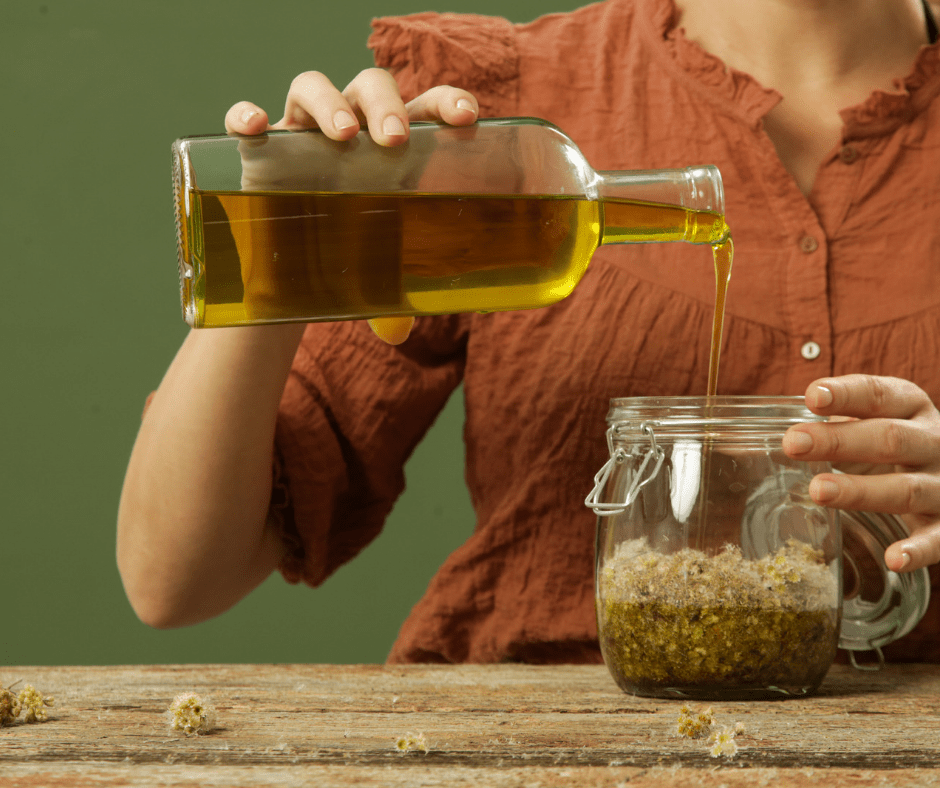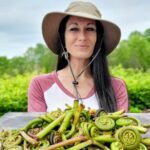A salve, or also known as an herbal ointment, is made of beeswax, herbs, and vegetable oils. The oil acts as a solvent for the medical properties of the herbs and provides a healing, emollient base. The bees wax is also a protective smoothing emollient and provides the firmness necessary to form the solid salve.
Salves can be made for a wide variety of reasons. They are commonly used as a topical treatment for aliments such as
~Stiff joints
~Sore muscles
~Rashes
~Scrapes and cuts
~Burns
~Bruises
~Nerve pain
~Drawing ointment for splinters and slivers
~Eczema/ psoriasis
~Dry skin
The plants that are used will determine the treatment capability of the salve. There are many combinations possible depending on what you are treating. For instance, if I was going to make a pain relieving salve, I would use herbs such as comfrey root, arnica, ginger and dandelion. I would make an herbal oil of these herbs to use in my pain relieving salve. If I had bug bites or maybe cuts and scrapes, I would make a salve of plantain, echinacea and comfrey.
The combinations are endless. It really just depends on what meat your family’s needs.
To start the whole process, you must make an herbal infused oil. Herbal infused oil is going to be your healing base when making a salve. For this, we use the sun!

Fresh or Dried Herbs ?
While most herbs can be infused either dried or fresh (with proper preparation), most tend to use dried herbs. This is because fresh herbs contain a high water content, which can effect the shelf life of your remedies.
Herbal oils made with fresh herbs can sometimes turn rancid or grow mold, especially if the carrier oil used is not very shelf stable, or the oil has been stored improperly.
However, is believed certain herbs such as ginger, St John’s wort, pokeroot and turmeric require fresh material to create an effective herbal oil.
Depending what you’re using the oil, for, can help make the decision easier. If you’re making something such as a body or bath oil, fresh herbs are fine, as you will probably use it before it goes bad. If you’re going to be storing the infused oil for a while, or might not use it right away, it may be best to stick with dried herbs.
If you decide to use fresh herbs in your oil, store in a cool dark place. Make small batches so that it won’t last as long as it sell by date!

Solar Infusing
Supplies
~ Organic Herbs
~ Organic carrier oil of choice (olive, sweet almond, etc)
~ Mason jar
~ Cheesecloth
~ Strainer
The solar infusing method is my preferred method because it keeps things simple. It’s also the traditional way of making an herbal infused oil by allowing time and nature to do the work.
According to World renowned herbalist Rosemary Gladstar, using the sun to infuse herbs in oil is a very old folk practice that has worked for our ancestors for centuries!
Unlike drying your herbs in the sun which is not recommended, during solar infusing, the oil protects the herbs. Instead of the medicinal properties being lost into thin air, they are being extracted into the oil.

Step 1. To begin this method you’re going to fill your jar 3/4 of the way full with your herbs. Leave 1 to 3 inches above your herbs open so that you have room to add your oil.
Step 2. Fill your jar with oil, stirring with a spoon if necessary, to make sure all herbs are covered completely. If you must, allow it to settle for a few minutes and top it off with a little extra oil.
Step 3. Place your lid securely and shake the jar. Put jar in a sunny, warm windowsill and shake once or more per day.
Step 4. After 2 to 3 weeks, strain the herbs out of the oil using your cheesecloth and strainer.
Pour into a clean jar and store in a cool, dark place. The oil should keep for up to a year. Vitamin E oil at a concentration of up to 1% may also be added to prolong shelflife for oils to be used topically.
This oil can then be used to make salves, soap’s, lotion’s, and body or bath oil. You can also use this method to make culinary oils such as garlic rosemary olive oil.

The Quick Method
The quick method is for those hurry situations when you need a remedy remedy sooner than 3 weeks.
For this method you’re going to need a double boiler, and the above ingredients.
Place your fresh or dried herbs in your double boiler to your desired amount. Pour the oil over until it covers the herbs by an inch or so.
Heat on low heat from 2-4 hours. While infusing your heat should never reach above a 110-130â°. Higher than this could destroy the medicinal properties That have been extracted. I use a laser thermometer to stay in the range.
Remove from heat and allow it to cool. Pour cooled oil into a jar for storage.
One of the best investments I ever made was purchasing a laser thermometer. I highly recommend this if you are going to be making frequent remedies. The laser thermometer will help you regulate temperatures so that your heat does not destroy your hard work.

Let’s Make a Salve
Supplies
~ Double boiler (Recommended but not necessary)
~ Bees wax ( Pellets or graded bees wax weights the same)
~ Herbal infused oil
~ Small jelly jars or metal tins
Instructions
Add oil and beeswax to your pan or double boiler.
A standard measurement when making a salve is 1/4 cup of beeswax, per 1 cup of oil. You can always add a little more for a firmer salve and use a little less for a thinner version.
Heat on low until your bees wax has melted and disperses in the oil. Once melted, pour the hot oil into your jars and allow to cool before placing your lids on.
You’re finished product can be stored in a cool area and used as needed. A high quality salve can last a few years.
You can be as creative as you’d like, adding things to your salves such as essential oils, vitamin E, camphor oil etc. If you choose to add these oils, do it at the very end, once you have removed your melted salve from the heat.

Safety Considerations
Do your research on what kind of herbal products you are thinking of making. Herbal medicine is still medicine, and although herbal salves are used topically, they still affect our health. Certain medications can interact with topical herbal treatments, therefore, it’s important to speak with your healthcare provider first. If you are pregnant, nursing or have prior health concerns, also speak with a doctor first before starting any herbal therapies. View our disclaimer here.

Final thought
Salves are a necessary remedy to keep in every herbal medicine cabinet. They are natural effective and best of all, easy to make!
Make salves based on your family’s needs, and be as creative as you’d like. Remember, experimenting is always the fun part.
Stay Wild
